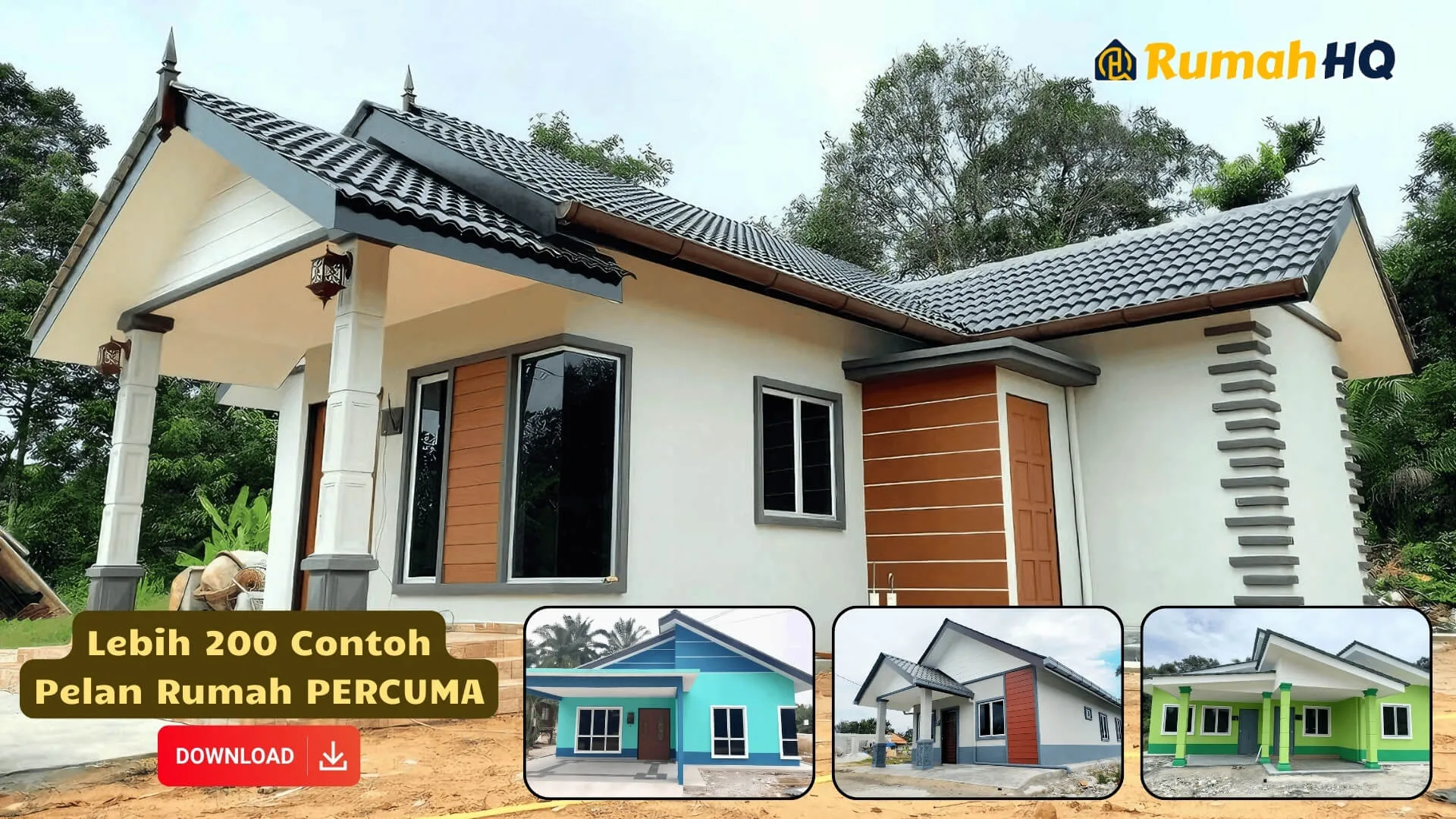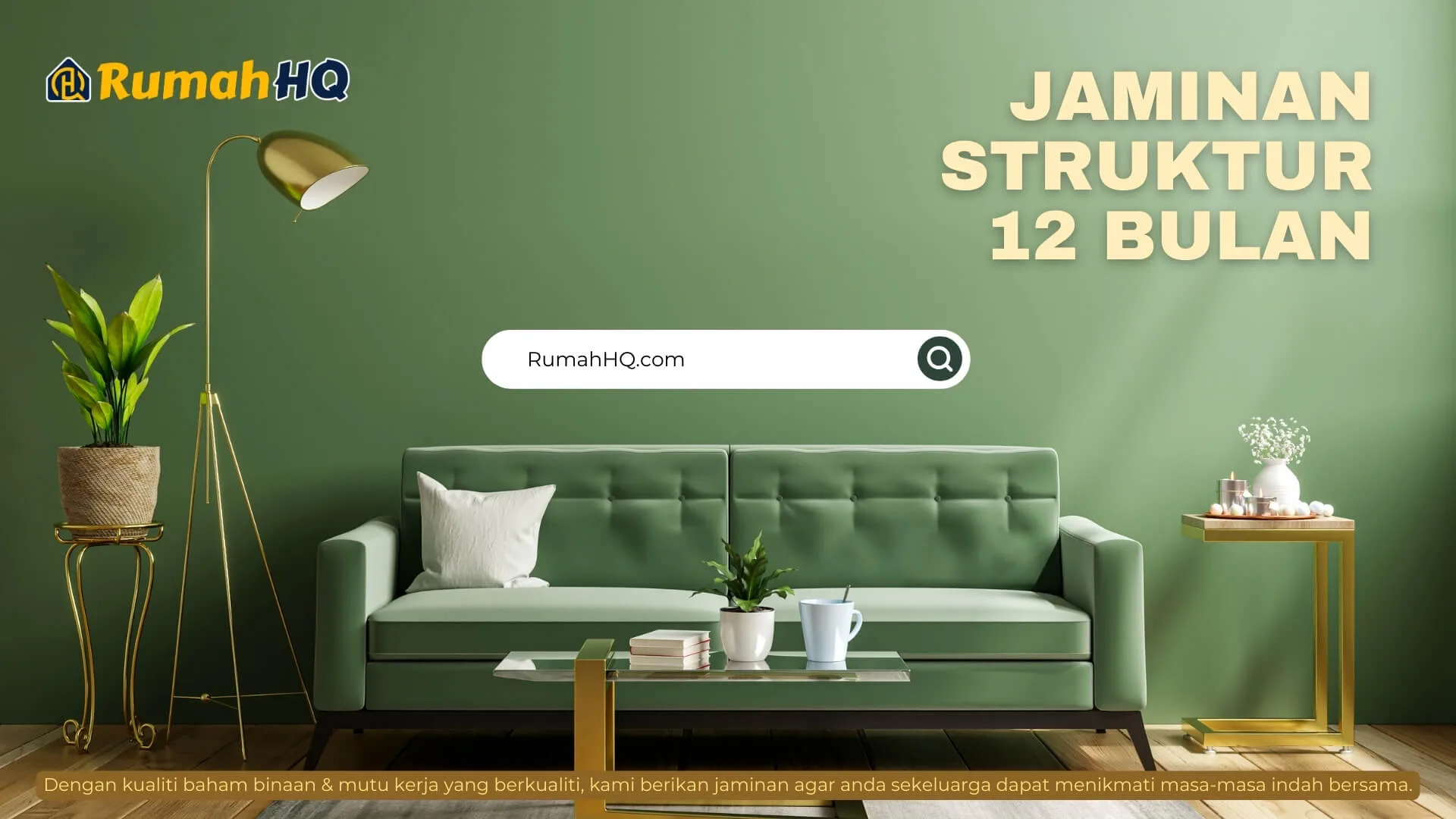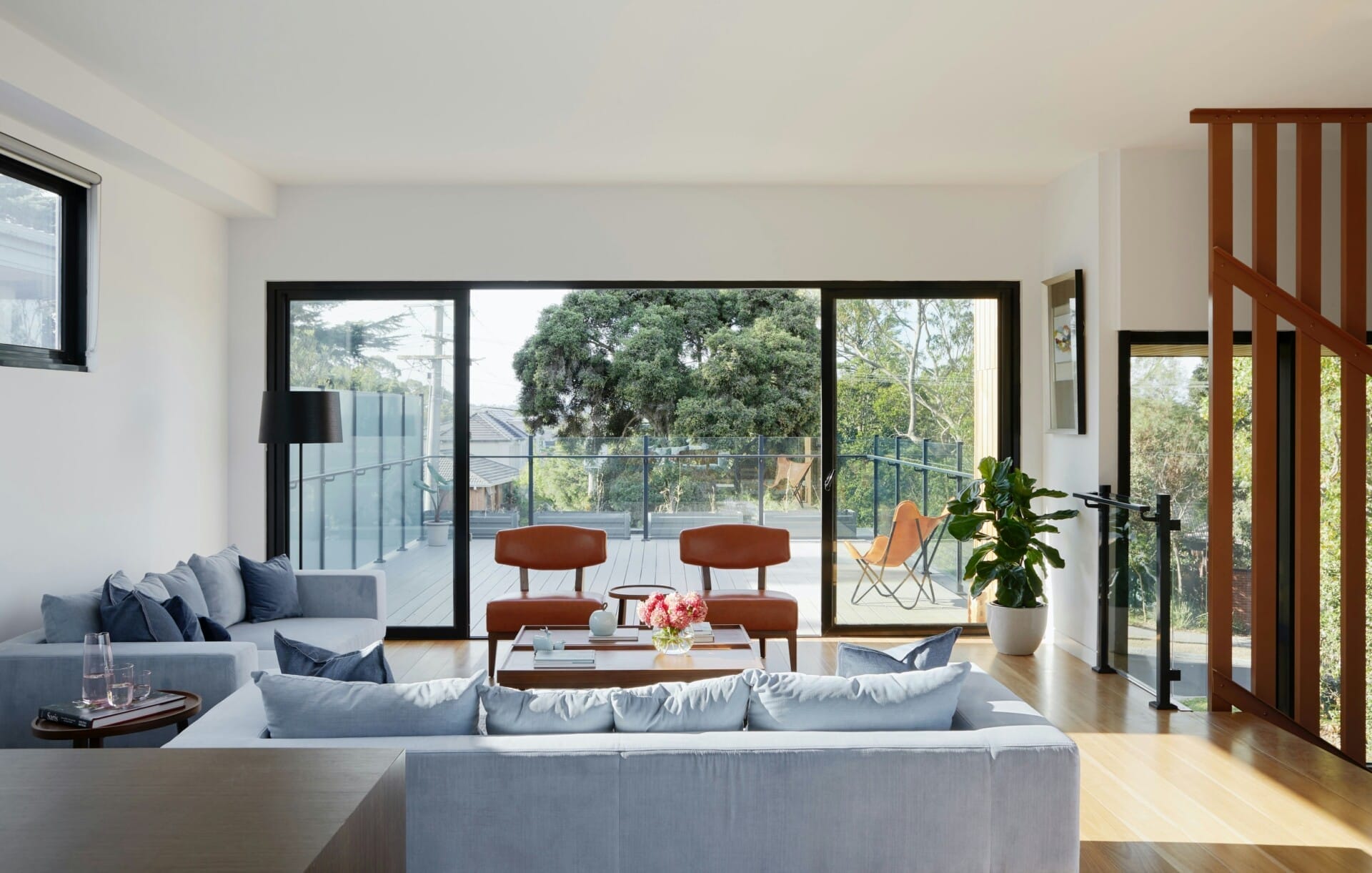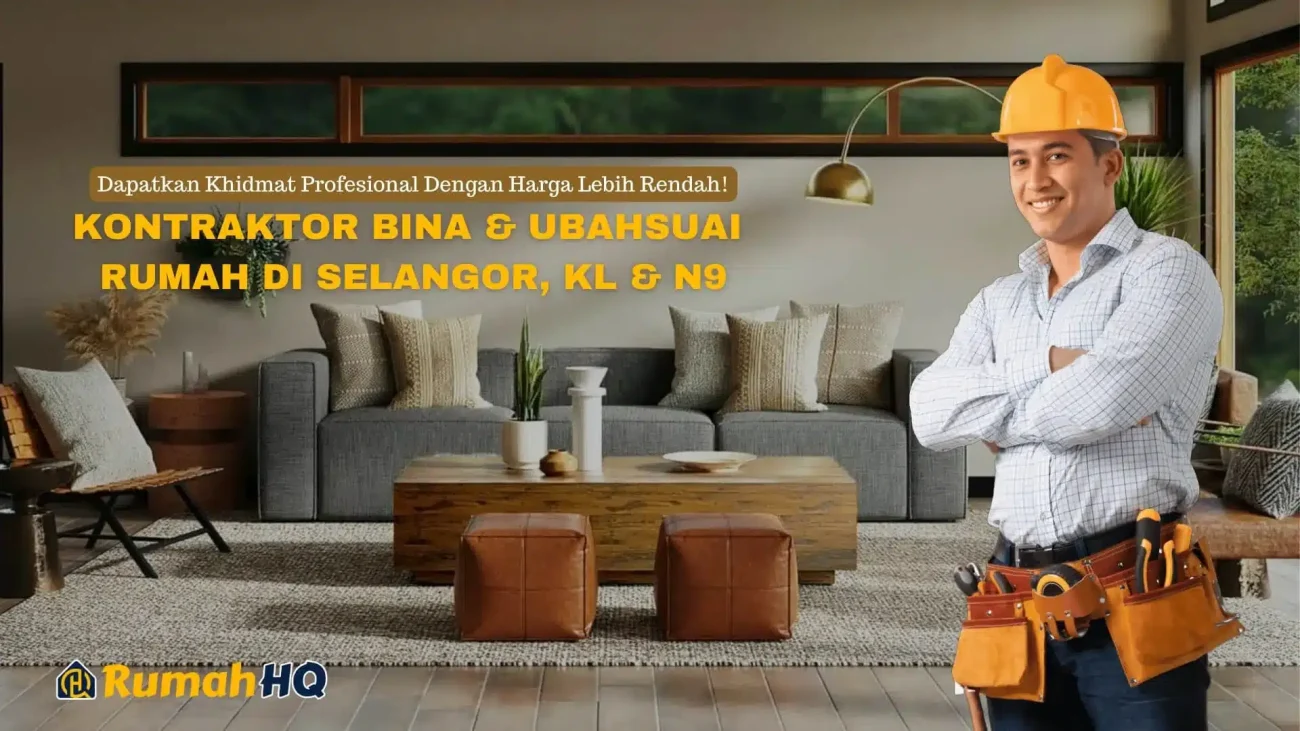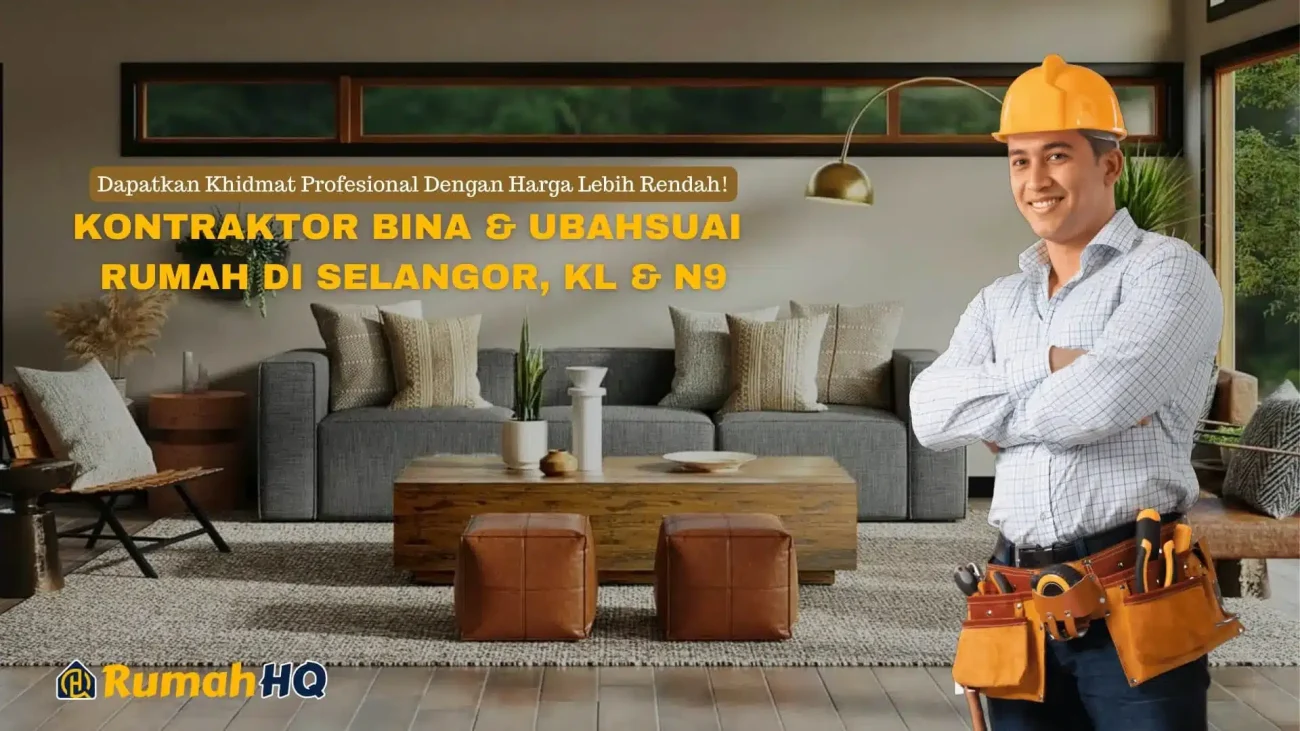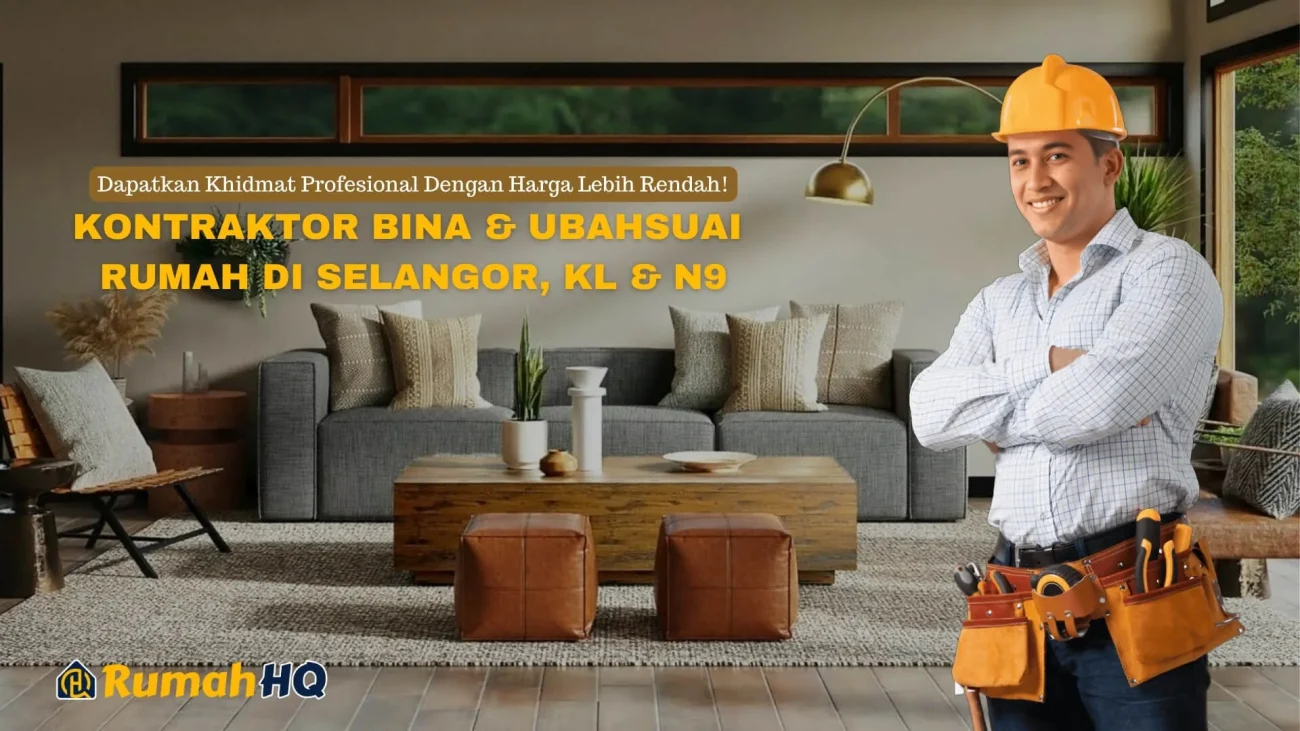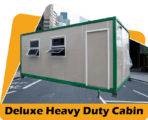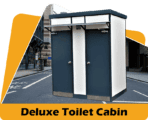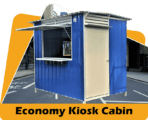
Blog
🔥 Rahsia Tuan Rumah Jana RM8,000 Setiap Bulan: Rumah Sewa Untung Besar Dengan Waranti & Servis Penyelenggaraan Yang Ramai Tak Tahu! | RumahHQ

Korang pernah tak terfikir kenapa ada tuan rumah yang boleh jana income RM5,000 hingga RM8,000 sebulan dari rumah sewa, while yang lain struggle nak dapat RM2,000 je dengan property yang sama saiz? Plot twist – bukan sebab lokasi je yang penting, tapi sebab mereka faham konsep waranti dan penyelenggaraan yang kebanyakan pelabur hartanah Malaysia overlook completely.propertyguru+1
Most people ingat beli rumah, letak iklan sewa, collect duit, habis cerita. Big mistake. Reality check: tanpa sistem waranti dan penyelenggaraan yang proper, korang akan spend beribu-ribu ringgit untuk repair last minute, deal dengan tenant complain nonstop, dan worst case scenario – vacancy rate tinggi sebab reputation korang dah teruk. Trust me, dalam era digital ni where tenant boleh review tuan rumah kat social media, reputation is everything.iproperty+1
Yang menariknya, Malaysian property market sekarang tengah experiencing average gross rental yield around 5.19% (Q3 2025), dengan certain areas macam KLCC dan Jalan Kuching offering yields above 6%. Tapi hanya mereka yang implement proper warranty and maintenance systems je yang boleh sustain dan maximize returns ni consistently. Artikel ni akan breakdown everything korang perlu tahu untuk transform rumah sewa korang dari ordinary investment jadi profit-generating machine yang run smoothly with minimal headaches.mahsing+1
1. Kenapa Waranti & Penyelenggaraan Adalah Game Changer Untuk Rumah Sewa
Okay, let me break down something yang ramai investor tak perasan: difference between successful landlord dengan yang constantly stress out adalah sistem waranti dan penyelenggaraan mereka. Korang boleh je beli rumah best location, renovate cantik habis berpuluh ribu, tapi kalau takde proper maintenance system, dalam masa 6 bulan je property value dan rental appeal korang akan drop dramatically. I’m not exaggerating – data shows yang properties dengan proper maintenance records boleh maintain rental yields between 5-6%, while yang neglected boleh turun sampai 2-3% je.globalpropertyguide+2
First thing first, kita kena faham apa sebenarnya maksud waranti dalam konteks rental property. Di Malaysia, under Housing Development Act (HDA), new properties datang dengan Defect Liability Period (DLP) selama 24 bulan from the date you receive your keys. Masa ni, any structural defects, faulty workmanship, atau damage yang bukan caused by you akan kena repair by developer for free. But here’s the catch – ramai tuan rumah tak utilize this properly. They just terima kunci, sewa terus, then bila ada problem baru panic. Smart landlords akan do thorough inspection time DLP, document everything, dan make sure semua issues resolved before tenant masuk. This is literally free money korang tinggalkan if tak maximize.lemon8-app+1
Beyond DLP, korang perlu establish your own warranty system untuk tenants. Companies like Handibee Malaysia sekarang dah mula offer home warranty services specifically untuk landlords – covering plumbing, electrical, air conditioning, dan water heater repairs dengan hourly rates around RM60/hour, which is way more affordable than emergency on-demand repairs yang boleh cost RM100-RM1,000. Imagine tenant call tengah malam cakap pipe pecah, air everywhere – kalau korang ada warranty service, just one call je, they handle everything. No stress, no inflated emergency rates, and most importantly, tenant satisfaction tinggi sebab response time fast. Happy tenants = longer rental periods = consistent income = lower vacancy costs.theexchangeasia+1
The financial impact ni massive, guys. Let’s do some real calculations based on Malaysian market data. Say korang punya property rental income RM2,500 per month. Without maintenance system, korang might face unexpected repairs averaging RM500-800 monthly (based on typical wear and tear, plus emergency issues). That’s 20-32% of your rental income habis just for reactive maintenance. Tapi dengan proper preventive maintenance dan warranty coverage, korang boleh reduce this to around RM150-250 monthly for scheduled maintenance only – that’s just 6-10% of rental income. The savings alone is RM300-500 monthly, atau RM3,600-6,000 setahun! Multiply that dengan 10 years tenancy period, korang dah save RM36,000-60,000. That’s literally enough untuk down payment unit lain.propertygenie+1
Psychological aspect pun important. Tenant perception terhadap landlord yang proactive dengan maintenance is drastically different dari yang reactive. Think about it from tenant perspective: dua apartment sama spec, sama price. Unit A – landlord ada maintenance schedule, provide warranty, respond fast bila ada issue. Unit B – landlord tunggu sampai something break baru action, ambil masa lama nak repair. Which one you pilih? Obvious, kan? This directly impacts your vacancy rate – one of the biggest profit killers dalam rental business. Industry data shows properties dengan good maintenance reputation boleh achieve 95-98% occupancy rate, compared to 70-80% for those yang ada reputation issues.airbtics+2
Insurance companies pun mula recognize value ni. Properties yang ada documented maintenance records and warranty systems boleh negotiate better insurance premiums – sometimes up to 15-20% cheaper. Kenapa? Sebab risk lower. Well-maintained properties less likely kena major damage, fire risk lower bila electrical system regularly checked, water damage risk reduced with proper plumbing maintenance. Insurance companies bukan bodoh – they calculate risk based on data, and data shows maintained properties = lower claims. So again, korang save money while protecting your asset better.handibee+1
From investment ROI perspective, property dengan comprehensive warranty and maintenance records command higher resale value. Bila korang nak sell nanti, potential buyers akan scrutinize maintenance history. Property yang ada complete maintenance logs, warranty documents, regular servicing records akan fetch 5-10% premium over similar properties without these records. Why? Because buyer confidence tinggi – they can see property ni dijaga properly, less likely ada hidden issues, and they can continue the same system. For RM500,000 property, that’s RM25,000-50,000 extra in your pocket just from proper documentation.riveriacity+1
Scalability adalah another massive advantage yang ramai tak nampak. If you plan nak expand portfolio dari 1 unit to 5, 10, atau 20 units, impossible nak manage without systematic approach. Korang tak boleh personally handle every single maintenance call, every repair, every tenant issue. But dengan proper warranty coverage dan maintenance contracts dengan reliable service providers, korang boleh scale efficiently. You basically create a replicable system – same maintenance schedule, same service providers, same response protocols across all units. This is how big property management companies operate, and there’s no reason individual investors tak boleh adopt same approach.rumahkabin+1
The competitive advantage ni real, especially dalam current Malaysian market where rental supply is increasing. Areas like Kuala Lumpur tengah face condo oversupply situation – which means tenant ada banyak choices. What makes them choose your property over others? Price bukan je factor – maintenance and reliability plays huge role. Young professionals and families especially value peace of mind – they willing pay RM100-200 extra monthly for property yang ada proper maintenance support because they know takde hidden costs, takde surprise breakdowns, and landlord reliable. This allows you to command premium pricing while maintaining high occupancy – the holy grail of rental investment.propertygenie+4
2. Sistem Waranti 12-24 Bulan: Setup Yang Wajib Ada Sebelum Sewa
Alright, now let’s dive into exactly how to setup waranti system yang bulletproof untuk rumah sewa korang. This is where most landlords drop the ball massively – they fokus sangat on getting tenant quickly, sampai skip critical warranty setup phase. Then 3 months later baru menyesal bila kena fork out RM5,000-10,000 untuk major repairs yang sepatutnya covered under original warranty. Don’t be that person, seriously.propertyguru+1
For new properties, korang automatically dapat Defect Liability Period (DLP) 24 bulan under Housing Development Act Malaysia. But listen carefully – this warranty is ONLY untuk properties under Residential title, and it covers defects in construction, structural issues, and faulty workmanship by the developer. The clock starts ticking dari tarikh korang terima kunci, bukan from completion date. So if korang delay ambil possession, korang literally membuang warranty period percuma. I’ve seen investors yang delay 3-4 months nak ambik kunci sebab tunggu renovation complete – bodoh gila, korang dah lose almost 20% of your warranty period already.propertyguru
Day One Strategy adalah crucial. Immediately after dapat kunci, korang kena conduct comprehensive defect inspection BEFORE any renovation work starts. Bring measuring tape (proper one, bukan IKEA punye), marker pen, masking tape untuk label issues, notebook untuk document everything, camera untuk photo/video evidence, and most importantly, your Sale and Purchase Agreement (SPA) yang ada original floor plan. Check literally everything: wall cracks ke tak, floor level ke tak, semua pintu tutup properly ke tak, windows seal elok ke tak, air conditioning functioning ke tak, electrical points semua working ke tak, plumbing ada leaks ke tak. Ambil masa 3-4 hours untuk do this properly – trust me, every hour you spend here will save you thousands of ringgit later.propertyguru
Document everything in writing dengan photos and timestamp. Create Excel spreadsheet or use property management apps like SpaceAgent or PropertyGuru untuk track all defects. Kategori by severity – critical (structural issues, major leaks, electrical hazards), medium (cosmetic defects, minor leaks, door alignment), and low (paint touch-ups, minor scratches). Then submit formal defect report to developer with all documentation attached. Keep multiple copies – one for developer, one for your records, one uploaded to cloud storage. This documentation will be your lifeline bila nanti ada disputes or insurance claims.fikryzulkifly+1
Now here’s the pro move yang separates amateurs from serious investors: create your own extended warranty system beyond the developer’s DLP. Services like Handibee Home Warranty Malaysia offers comprehensive coverage for RM60/hour, covering plumbing repairs, electrical wiring issues, air conditioning repairs, auto-gate repairs, and even appliance repairs. Compare this to on-demand emergency rates – plumbing emergency can cost RM100-1,000, electrical issues RM150-600, aircon repairs RM130-600. With warranty coverage, korang bayar fixed hourly rate je, plus semua repairs come with 30-day guarantee. Do the math: if you have just 2-3 maintenance calls per year, you already break even. Anything beyond that is pure savings.theexchangeasia+1
Structural components requires special attention dalam warranty planning. As landlord, you are legally obligated to maintain structural integrity of the property – ini include roof, foundation, main walls, plumbing infrastructure, electrical wiring systems, and built-in fixtures. Any “wear and tear” damage to these elements is YOUR responsibility, bukan tenant. So smart move adalah to get these inspected and certified BEFORE tenant moves in. Hire professional inspector (cost around RM500-800 for thorough inspection) to check roof condition, electrical panel, main pipes, water heater, air conditioning units. Get written report stating condition of everything. This serves dual purpose: 1) You identify issues to fix before tenant, 2) You have baseline documentation to compare when tenant moves out.iproperty+2
For appliances and fittings, create detailed inventory list dengan condition notes and photos. List out everything: built-in kitchen cabinets, bathroom fixtures, lighting, fans, air conditioning units, water heater, autogate system if applicable, window grills, door locks. Note down brand, model, purchase date if available, current condition (new/good/fair/worn), and any existing damages. Include this inventory dalam tenancy agreement – both landlord and tenant sign off. This prevents disputes later about who responsible for what damage.propertyguru+1
Warranty transfer is another critical but often missed step. Many appliances and systems come with manufacturer warranty – aircon might have 1-3 years warranty, water heater 2-5 years, built-in appliances 1-2 years. Make sure korang register these warranties properly under your name (or company name if property under SDN BHD), keep all warranty cards and receipts organized. Better yet, create digital folder dengan scan all warranty documents. When major appliance breaks down, first check if still under manufacturer warranty before spending money on repairs. I know landlord yang spent RM1,500 fixing water heater yang sebenarnya still under manufacturer warranty – total waste sebab manufacturer would repair for free.lemon8-app+1
Legal protection through proper warranty documentation is invaluable. Malaysian law under Contracts Act 1950 recognizes written documentation as primary evidence dalam tenancy disputes. If tenant claims something was broken when they moved in, but you have timestamped photos and signed inventory showing it was working, case closed. If tenant cause damage then try to claim it was pre-existing, your documentation proves otherwise. This has saved countless landlords from losing deposit refund disputes – tribunal and small claims court heavily relies on documented evidence. Verbal agreements mean nothing; only written records with signatures and dates matter.kevinwuassociates+2
Finally, build relationship dengan reliable maintenance contractors sebagai part of your warranty system. Identify 2-3 trusted contractors for different specialties: one for plumbing, one for electrical, one for general handyman work. Negotiate retainer arrangements – pay them small monthly retainer (maybe RM100-200) for priority service and discounted rates. This means when emergency happens, they prioritize your property over random customers. Get their contracts in writing, include response time commitments (e.g., must respond within 4 hours for emergencies, complete non-urgent work within 48 hours). Companies like TSEC Property Maintenance yang experienced dengan residential projects can be valuable long-term partners. The key is consistency – same contractors familiar with your property, they know the history, they can respond faster and more effectively.tsec+2
3. Struktur Penyelenggaraan Berkala Yang Jimat Masa & Duit
Let’s talk about preventive maintenance scheduling – the secret weapon yang separates profitable rental properties from money pits. Think of it like going to gym regularly versus waiting until you kena heart attack baru nak exercise. Preventive maintenance cost maybe RM200-300 monthly, but it prevents RM2,000-5,000 emergency repairs. The ROI is insane, yet majority of Malaysian landlords masih reactive approach je – tunggu sampai something rosak teruk baru panic.iproperty+3
Monthly maintenance checklist should be your bible. Every month, either you personally atau hire property manager perlu check basic items: aircon filters need cleaning (takes 10 minutes, saves RM300-500 aircon servicing costs later), check for water leaks under sinks and around toilets (small leak now vs RM3,000 water damage repair later), test all electrical switches and points, check door locks and hinges, inspect ceiling for dampness or stains, verify autogate functioning properly, check water heater temperature settings, inspect kitchen exhaust and hood for grease buildup, ensure all windows close and lock properly. Document each inspection dengan simple checklist app on phone. Takes maybe 30-45 minutes total, but spots issues early when they cheap to fix.recommend+3
Quarterly servicing for critical systems is non-negotiable if you serious about maximizing rental property lifespan. Every 3 months: professional aircon servicing (RM80-150 per unit, prevents RM500-800 major repairs), pest control treatment especially for termites (RM100-200, prevents RM5,000-15,000 structural damage), deep clean kitchen and bathroom drainage systems (RM150-250, prevents RM400-600 clogged pipe emergency calls), inspect and lubricate autogate mechanisms (RM80-120, prevents RM500-800 motor replacement), check and clean water tank if applicable (RM100-200, prevents health issues and water contamination). Yes, total quarterly cost is around RM500-900, but this is preventive investment that saves you minimum 3-5x dalam avoided emergency repairs.propertygenie+4
Create annual major maintenance calendar blocking out specific months for bigger tasks. January: repaint external walls if needed, inspect roof for leaks before monsoon season, check external drainage. April: service water heater thoroughly, inspect electrical panel and circuit breakers, test smoke detectors and replace batteries. July: pressure wash exterior areas, check grout and waterproofing in bathrooms, inspect and treat wooden furniture for termites. October: final roof inspection before year-end monsoon, service all air conditioning units comprehensively, check fire extinguisher expiry dates and replace if needed. By spreading major maintenance across the year, you avoid huge one-time expenses and keep property in optimal condition year-round.tsec+2
Tenant education is massively underrated component of effective maintenance strategy. When tenant moves in, spend 30 minutes giving them proper orientation: show them where main water valve is (critical for emergency shutoffs), explain how to use aircon efficiently (wrong usage cause 50% of aircon issues), demonstrate proper kitchen exhaust usage (prevents grease fires), show them what maintenance they responsible for versus what you handle, provide contact list for approved contractors for emergency repairs. Provide simple tenant handbook dengan photos and instructions – “If this happens, do this.” Educated tenants cause fewer problems, report issues earlier (when cheaper to fix), and generally take better care of property because they understand systems better.propertyguru+2
Technology integration transforms maintenance from reactive chaos to proactive system. Apps like Recommend.my Malaysia connect you instantly to vetted maintenance professionals – just book service through app, track progress, make payment. Smart landlords use property management software (SpaceAgent, PropertyGuru, or even simple Google Sheets) to schedule maintenance reminders, track expenses, store contractor contacts, and maintain digital log of all work done. Set calendar reminders 2 weeks before scheduled maintenance so you not caught off guard. This systematization allows you to manage multiple units efficiently without missing critical maintenance windows.recommend+2
Budget allocation for maintenance must be realistic, not wishful thinking. Industry standard adalah 1-2% of property value annually for routine maintenance, plus another 0.5-1% for emergency fund. So for RM500,000 property, allocate RM5,000-10,000 yearly for planned maintenance (that’s RM420-850 monthly), plus keep RM2,500-5,000 emergency buffer. Sounds like a lot? Consider this: tenanted property generates RM2,500 monthly, that’s RM30,000 annually. Spending RM7,500-15,000 on maintenance means you’re investing 25-50% of gross rental income to protect a RM500,000 asset AND ensure continuous income stream. That’s actually smart business, not expense – it’s income protection investment.loanstreet+2
Contractor management system separates professional landlords from amateurs. Don’t just save random contractor numbers in phone. Create proper database: contractor name, specialty, contact details, hourly rates, response time commitment, quality rating (you rate them after each job), notes about specific expertise. Review and update quarterly – weed out underperformers, add new reliable ones. Negotiate annual contracts for regular maintenance – they give you better rates for guaranteed business, you get priority service and price certainty. Companies like TSEC Property Maintenance or local contractors willing to work on retainer basis if you give them consistent work. This relationship building pays dividends when emergency happens at 2 AM – your contracted guys will respond, random contractors won’t.handibee+3
Seasonal considerations for Malaysia’s climate is critical for maintenance planning. Monsoon season (November-March for East Coast, May-September for West Coast) requires pre-season roof and drainage checks to prevent flooding issues. Hot season (March-April) is prime time for aircon servicing before heavy usage months. Year-end is when most tenants move (coinciding with bonus season and school holidays), making it ideal timing for major refreshing works like repainting or upgrading fixtures. Plan maintenance around these cycles rather than arbitrary dates – you maximize effectiveness while minimizing disruption to tenants.propertyguru+1
4. Legal Framework: Tanggungjawab Tuan Rumah vs Penyewa
Understanding legal boundaries of maintenance responsibility is absolutely crucial to avoid disputes and protect your investment. Malaysian law provides framework through multiple acts – Contracts Act 1950, Distress Act 1951, Civil Law Act 1956, National Land Code 1965, plus common law and case precedents. But here’s the thing: most landlords and tenants blur these lines simply because tenancy agreements tidak specify clearly enough, leading to endless arguments about “who should pay for this?”.kevinwuassociates+2
Landlord’s primary responsibilities under Malaysian law are clear-cut: you MUST maintain structural integrity and basic habitability of the property. This explicitly includes: roof repairs and waterproofing, foundation and main wall structures, major plumbing infrastructure (main pipes, sewer lines), electrical wiring systems and main panel, built-in fixtures like kitchen cabinets and bathroom fittings, security features like locks and grills, any appliances YOU provided as part of the rental package (if you included washing machine, fridge, etc., their major repairs are your responsibility). These are considered “wear and tear” items – natural deterioration through normal use, and law clearly places repair burden on landlord.iproperty+2
The “wear and tear” principle is critical legal concept here. If pipe corrodes after 5 years of normal use and leaks, that’s wear and tear – landlord pays. If paint fades after 3 years, wear and tear – landlord pays for repainting. If aircon compressor dies after 8 years of normal usage, wear and tear – landlord responsible. But if tenant accidentally breaks kitchen cabinet door, that’s NOT wear and tear, that’s damage – tenant pays. If tenant overloads electrical circuit and trips the system, tenant’s fault. If tenant flushes inappropriate items down toilet causing clog, tenant’s expense. The determining factor is: did this happen through normal, reasonable use over time (wear and tear), or did it happen due to specific action, negligence, or misuse (damage)?fikryzulkifly+2
Tenant responsibilities are equally important to define. Tenants must: maintain basic cleanliness of property, perform minor maintenance like changing light bulbs, cleaning aircon filters monthly, basic drain cleaning, ensuring proper ventilation to prevent mold, reporting issues to landlord promptly (delay in reporting can make them liable if damage worsens), not making structural changes or major modifications without written landlord permission, properly using all fixtures and appliances as intended, allowing landlord access for scheduled maintenance inspections (with minimum 24 hours notice). Tenants also responsible for damages caused by their negligence, misuse, or by their guests – if friend accidentally breaks window during party, tenant pays.propertygenie+2
Tenancy Agreement adalah your legal shield – this document MUST specify maintenance responsibilities explicitly. Don’t use generic online templates without customization. Your agreement should include detailed clause like: “Landlord responsible for structural repairs, major system failures, wear and tear damages. Tenant responsible for minor maintenance, cleanliness, damages caused by misuse or negligence. For repairs below RM500, tenant may arrange directly and deduct from rent with prior written notice and receipts. For repairs above RM500, landlord must be notified and approve contractor. Emergency repairs (water leak, electrical hazard, security breach) tenant may arrange immediately and landlord reimburses within 7 days upon receipt of invoice.” Specific clauses like this prevent 90% of disputes.iproperty+2
Documentation requirements under Malaysian law heavily favor written evidence. Verbal agreements or WhatsApp conversations have limited weight in disputes. You need: signed tenancy agreement with clear maintenance clauses, detailed move-in inspection report with photos signed by both parties, inventory list of all items and their condition, maintenance logs showing all repairs done with dates and costs, correspondence about reported issues (emails or formal letters, not just WhatsApp), receipts and invoices for all repair work, move-out inspection report comparing to move-in condition. In Small Claims Tribunal or Sessions Court (where most tenancy disputes heard), judges rely heavily on documentary evidence. No documents = no case, simple as that.fikryzulkifly+2
Deposit management has legal implications for maintenance disputes. Standard practice in Malaysia is 2-3 months rent as security deposit, plus usually 0.5-1 month utility deposit. This deposit can legally be used to cover unpaid rent, utility bills, and damages beyond normal wear and tear. But here’s where many landlords screw up: they try to charge tenant for normal wear and tear items (faded paint, worn carpet, old aircon repairs) using deposit. This is legally questionable and often fails in tribunal. Deposit can only cover actual damages or breach of contract, not normal deterioration. Smart landlords make this crystal clear in agreement and during move-in briefing to avoid expectation mismatch later.propertyguru+2
Emergency repair provisions need special legal attention. Malaysian law generally allows tenants to arrange emergency repairs if landlord tidak dapat dihubungi within reasonable timeframe (usually defined as 24-48 hours) and emergency poses health/safety risk or prevents reasonable use of property. Examples: burst pipe flooding property, total electrical failure, broken main door lock, gas leak. Tenant can hire contractor, pay for repair, then claim reimbursement from landlord. To protect yourself legally, your tenancy agreement should define: what constitutes emergency, tenant must attempt to contact landlord through specified channels first, tenant should use landlord’s approved contractors if possible for emergency, tenant must keep all receipts and notify landlord within 24 hours of emergency repair, reimbursement timeline (e.g., 7 days upon receipt of proper invoice). Without these provisions clearly stated, you might face disputes about what was “emergency” and what was unnecessary expense.propertygenie+3
Inspection rights are legally protected for both parties. Landlord has right to inspect property to ensure proper maintenance and no unauthorized modifications, but MUST provide minimum 24 hours written notice except for genuine emergencies. Tenant has right to quiet enjoyment of property – you cannot just show up unannounced or conduct excessive inspections (once per quarter is reasonable, once per week is harassment). Best practice: schedule routine inspections same time as quarterly maintenance (kills two birds with one stone), give proper notice, be professional, document findings, discuss any issues respectfully. This maintains good landlord-tenant relationship while protecting your legal right to monitor property condition.propertyguru+2
5. Automation & Technology: Platform Penyelenggaraan Terkini
Welcome to 2025, where smart landlords use technology to scale their rental business beyond what’s manually possible. Gone are the days where you need to personally handle every maintenance call, chase contractors, track expenses manually, or rely on memory for maintenance schedules. Technology has democratized property management – now individual investors can operate with efficiency level yang dulu hanya large property management companies ada.recommend+2
Home warranty platforms like Handibee Malaysia have revolutionized maintenance for rental properties. Traditional model: tenant call complaining about issue, you scramble to find contractor, negotiate price (usually inflated because it’s “emergency”), wait for them to come (maybe today, maybe next week), hope work is done properly, argue about final bill, rinse and repeat. Stress level through the roof. New model: tenant reports issue through app or hotline, Handibee automatically dispatches certified technician, fixed hourly rate RM60 regardless of job complexity (no price haggling), 30-day guarantee on all repairs, you track everything through dashboard. The difference is night and day. You’re essentially outsourcing entire maintenance headache to professional service that operates 24/7, covers multiple specialties (plumbing, electrical, aircon, autogate, even appliance repairs), and provides consistent quality.theexchangeasia+2
On-demand service marketplaces like Recommend.my transformed how we access maintenance professionals. Platform ni connects you to vetted, reviewed home maintenance experts across Malaysia – aircon servicing, electrical and wiring services, plumbing, carpet cleaning, auto-gate repair, alarm and CCTV, fridge repair, and more. The genius is in the system: service providers compete on price and quality (transparent reviews from actual customers), you book directly through platform (no phone tag), track service progress real-time, make payment through secure platform (built-in dispute resolution). For landlords managing multiple properties, this is game-changing because you can coordinate multiple services across different locations simultaneously from single dashboard.recommend+1
Property management software centralizes everything into one system. Whether you use dedicated apps like SpaceAgent, PropertyGuru Property Management tool, or even sophisticated Google Sheets setup, the goal is sama: single source of truth for all property data. Your system should track: tenant information and lease dates, rental payment schedules and history, maintenance schedule and reminders, contractor contact database and performance ratings, expense tracking by category and property, document storage (scanned agreements, warranties, invoices), photo documentation of property condition over time. When everything centralized, you can pull reports instantly: “How much did I spend on maintenance for Unit A last year?” – 2 clicks, done. “When is next aircon servicing due for all my properties?” – instant answer with automated reminders. This level of organization impossible with manual record-keeping.recommend+1
Automated reminder systems prevent costly forgotten maintenance. Setup calendar notifications 2-3 weeks before scheduled maintenance – aircon servicing every 3 months, pest control quarterly, annual roof inspection, fire extinguisher expiry dates, insurance renewal, quit rent payment deadlines, tenancy agreement expiry dates. Use Google Calendar, Microsoft Outlook, or specialized property management apps. Pro tip: setup two reminders for critical items – first reminder 1 month before (gives you time to schedule), second reminder 1 week before (final push to execute). I’ve seen landlords lose thousands simply because they forgot to renew insurance and then kena claim rejected, or missed DLP deadline and can’t claim defects from developer anymore. Technology prevents these expensive mistakes.propertyguru+2
Digital payment integration streamlines rental collection and expense management. Setup online banking recurring payment for tenants (most Malaysian banks support this), or use platforms like PayNet DuitNow, Touch ‘n Go eWallet business account, or property-specific payment gateways. Benefits are massive: automatic payment reminders to tenants, instant confirmation when payment received, automatic late payment flags, digital receipt generation, easier tax filing (all transactions tracked digitally for rental income reporting and e-Invoice requirements starting 2025). For expenses, use credit card for all maintenance and contractor payments where possible – automatic expense categorization, monthly statements as backup documentation, potential cashback or points (that’s free money), easier dispute resolution if contractor work unsatisfactory.taxpod+1
Smart home technology adds value while reducing maintenance calls. Install smart water leak detectors (RM100-200 each) at critical points – under sinks, near water heater, in bathrooms. They alert you via phone app immediately when detect water, allowing fast response before major damage occurs. Smart smoke detectors (RM150-300) that send alerts to your phone. Smart door locks (RM500-800) that allow you to provide temporary access codes to contractors without giving physical keys, and you can monitor when doors opened/closed remotely. Smart aircon controllers (RM200-400) that let you remotely troubleshoot tenant aircon issues without site visit – maybe they just set wrong temperature or mode, you can check and fix remotely. These investments pay for themselves quickly through prevented damages and reduced site visits.handibee+1
Cloud storage for documentation is non-negotiable in 2025. Use Google Drive, Dropbox, or OneDrive to store all property documents: purchase agreements, tenancy agreements, defect reports, warranty certificates, inspection photos/videos, contractor invoices, maintenance logs, insurance policies. Organize by property address and date. Tag files properly for easy search. Share specific folders with relevant parties (accountant gets expense folder, insurance agent gets claim documentation folder). Benefits: accessible from anywhere (you can pull up document while standing at property or sitting with lawyer), automatic backup (no risk of losing everything if laptop crashes), version control (can see historical changes), easy sharing for legal or tax purposes. Time saved alone is worth the RM30-50 monthly subscription cost for premium cloud storage.fikryzulkifly+2
Communication platform standardization reduces chaos. Don’t spread communication across WhatsApp, email, phone calls, text messages randomly. Pick primary channel (WhatsApp Business is popular in Malaysia for landlord-tenant communication), use it consistently, archive important conversations, use WhatsApp features like labels to categorize conversations (Maintenance, Payment, General), setup auto-replies for common questions, use broadcast lists for multiple tenants (announcement about scheduled maintenance). For contractors, email primary method for formal job requests and confirmations (creates paper trail), WhatsApp for quick updates and photos. Having clear communication protocols prevents the “he said, she said” disputes and ensures nothing falls through cracks.propertyguru+1
6. Financial Planning: Budgeting Untuk Maintenance & Emergency Fund
Let’s talk money – specifically, how to financially structure rental property to be profitable while maintaining proper maintenance standards. Too many landlords focus purely on gross rental yield without accounting for real maintenance costs, then wonder why they’re losing money despite property being tenanted. The secret is sophisticated financial planning that serious investors use but rarely share publicly.loanstreet+1
Gross vs Net Rental Yield – understand this distinction or forever struggle. Gross rental yield is simple calculation: (Annual Rent ÷ Property Price) × 100. If your RM500,000 property generates RM2,500 monthly rent, gross yield is (RM30,000 ÷ RM500,000) × 100 = 6%. Sounds great, right? But this number is misleading because it ignores all expenses. Net rental yield accounts for operating costs: (Annual Rent – Annual Expenses) ÷ Property Price × 100. Those expenses include: quit rent and assessment, maintenance fees, insurance, property management fees if applicable, regular maintenance costs, utilities if landlord pays, income tax on rental income. Suddenly that 6% gross yield becomes 3-3.5% net yield. Still profitable, but the margin is tighter than you thought. Always calculate and track net yield – that’s your real return.globalpropertyguide+2
The 1% Rule for maintenance budgeting is industry standard starting point. Allocate minimum 1% of property value annually for routine maintenance and repairs. RM400,000 property = RM4,000 yearly maintenance budget (RM333/month). RM600,000 property = RM6,000 yearly (RM500/month). This covers regular servicing, minor repairs, gradual upgrades. But here’s the catch: this is MINIMUM. Older properties (15+ years) should budget 2-3% because systems aging and need more frequent attention. New properties (less than 5 years) might get away with 0.5-1% if still under warranty and built with quality materials. Adjust based on your specific property age, condition, and usage intensity (family with kids causes more wear than single professional).propertygenie+1
Emergency fund is separate from maintenance budget – critical distinction many miss. Maintenance budget is for planned, regular expenses. Emergency fund is for unexpected major issues: water heater suddenly dies (RM1,500-3,000 replacement), aircon compressor failure (RM1,200-2,500), major pipe burst requiring wall hacking (RM3,000-5,000), termite damage requiring treatment and repairs (RM5,000-15,000). Industry recommendation: maintain emergency fund of 3-6 months rental income per property. For RM2,500/month rental, that’s RM7,500-15,000 cash buffer. Yes, it’s substantial, but one major emergency without this buffer and you’re forced into high-interest personal loan or credit card debt to cover, which kills profitability instantly.riveriacity+1
Expense categorization for tax efficiency and cash flow clarity. Setup chart of accounts for rental business: Fixed expenses (quit rent, assessment, insurance premiums, loan interest) – these sama every month, predictable. Variable expenses (repairs, maintenance, utilities if included) – fluctuate monthly. Capital expenditure (major renovations, replacing major systems like aircon or water heater) – infrequent but large amounts. Under Malaysian tax law, certain expenses are fully deductible against rental income – repairs and maintenance, insurance, quit rent and assessment, loan interest, agent fees. But capital expenditure has different treatment (typically depreciated over time). Proper categorization ensures you maximize tax deductions while maintaining accurate profitability picture.taxpod+1
ROI calculation including maintenance gives true investment performance picture. ROI = (Net Profit ÷ Total Investment) × 100. Let’s work through real example: RM500,000 property purchase + RM20,000 transaction costs = RM520,000 total investment. Annual rental income RM30,000. Annual expenses: quit rent RM150, assessment RM600, maintenance fees RM1,800, insurance RM800, maintenance budget RM5,000, property tax and income tax RM2,000, miscellaneous RM650 = Total expenses RM11,000. Net profit: RM30,000 – RM11,000 = RM19,000 annually. ROI: (RM19,000 ÷ RM520,000) × 100 = 3.65% annually. That’s your cash-on-cash return. Add potential capital appreciation of 3-5% annually, total return is 6.65-8.65% – now we talking about real returns that account for everything.riveriacity+1
Cash flow management determines whether you’re building wealth or just breaking even. Positive cash flow means rental income exceeds all expenses including loan payment – you pocket difference every month. Negative cash flow means expenses exceed rent – you must top up from pocket monthly. Many investors accept slight negative cash flow early years banking on capital appreciation, but this is risky if you don’t have deep reserves. Target minimum RM500-800 monthly positive cash flow per property after ALL expenses including loan payment. This gives you buffer for unexpected costs while building emergency fund. Over 10-15 years, this positive cash flow compounds significantly while loan principal decreases, and by year 20-25 when loan paid off, entire rental income becomes profit.mahsing+2
Maintenance reserve account is smart operational practice. Open separate savings account specifically for property maintenance – don’t mix with personal funds. Every month when collect rent, immediately transfer your maintenance budget amount (that 1-2% of property value calculated earlier) into this account. Discipline yourself to ONLY use this account for property expenses. Benefits: clear separation makes accounting easier, you build reserve systematically, prevents “borrowing” from property funds for personal use, when tax time comes, all deductible expenses clearly tracked in one account. Some landlords even setup multiple accounts per property if managing large portfolio – Unit A maintenance account, Unit B maintenance account – ultra-organized but highly effective for preventing cash flow confusion.propertygenie
Insurance optimization protects financial planning from catastrophic loss. Minimum: building insurance (covers structure against fire, flood, earthquake) required by bank if property mortgaged, usually RM300-800 annually. Strongly recommended: contents insurance if you providing furniture and appliances (covers repair/replacement if damaged), landlord insurance (covers rental default, tenant damages, legal expenses, alternative accommodation costs if property becomes uninhabitable), and if you serious, home warranty insurance like Handibee coverage for maintenance certainty. Total insurance cost might be RM1,000-2,000 annually, but single uninsured incident can cost RM50,000-100,000+ and bankrupt your rental business. Insurance isn’t expense, it’s risk transfer – you paying professional insurers to absorb potential massive losses in exchange for small, predictable annual premium.theexchangeasia+1
7. Tenant Management: Communication Strategy Yang Effective
Here’s controversial truth: your rental property success is 50% property quality, 50% tenant management. You can have best location, most beautiful renovation, perfect maintenance system, but if tenant relationship toxic, you’ll face constant headaches, high turnover, legal disputes, and damaged property. Conversely, great tenant makes everything easy – they pay on time, maintain property well, report issues promptly, stay long-term, and even refer their friends to your other properties. The difference is usually your communication and management strategy.propertygenie+2
Tenant screening process is your first and most important defense. Don’t just accept whoever first appears willing to pay asking price. Implement systematic screening: request official documents (IC copy, employment letter, latest pay slip, previous landlord reference), check credit history if possible (CCRIS/CTOS report with their permission), conduct face-to-face interview to assess character and lifestyle compatibility with property, verify employment by calling HR department (confirm position and salary), speak with previous landlord about payment history and property care. Yes, this sounds intrusive and time-consuming, but 2-3 hours spent screening prevents 2-3 years of nightmare tenant. One bad tenant can cost you RM20,000-50,000 in damages, legal fees, and lost rent – worth doing thorough screening, trust me.propertyguru+1
Onboarding process sets the tone for entire tenancy. When tenant moves in, conduct comprehensive orientation session (30-45 minutes): walk through entire property showing them how everything works (aircon settings, water heater controls, circuit breaker location, gas valve, water main valve), explain their maintenance responsibilities clearly, provide written contact information (your number, emergency contractor numbers, property management if applicable), demonstrate reporting procedure for issues (WhatsApp, email, phone?), review tenancy agreement key clauses together so no surprises later, take move-in photos/video together with their acknowledgment, provide tenant handbook if you created one. This upfront investment in proper onboarding prevents 80% of future disputes because tenant knows exactly what expected of them and how system works.propertygenie+1
Communication protocol must be established and maintained consistently. Define response times: routine inquiries within 24 hours, urgent issues within 4-6 hours, emergencies immediate response. Define channels: WhatsApp for general communication and updates, email for formal notices and documentation, phone for urgent matters. Define escalation procedure: tenant reports issue → you acknowledge receipt → assess whether emergency or routine → arrange contractor or handle personally → update tenant on timeline → follow up after resolution. Consistency is key – if you promise 24-hour response, deliver 24-hour response every time. Reliability builds trust; unreliability breeds resentment and complaints.propertyguru+2
Documentation of all tenant interactions protects both parties legally. Save all WhatsApp conversations (export and backup monthly), keep emails in dedicated folder, takekevinwuassociates+1
Baik, saya akan teruskan artikel dari Section 7 yang terhenti tadi:
notes during phone calls, document move-in and move-out conditions thoroughly with timestamped photos/videos. When tenant complains about issue, acknowledge receipt in writing (“Thank you for reporting. We will inspect and respond within 24 hours”), document your response and action taken, keep contractor invoices and before/after repair photos. This comprehensive documentation is your insurance policy against false claims, deposit disputes, and potential legal issues. Courts and tribunals heavily rely on written evidence – tenant can claim anything verbally, but if you have documented proof showing otherwise, case dismissed.propertyguru+2
Proactive maintenance communication prevents complaints before they happen. Instead of waiting for tenant to complain about something broken, send regular maintenance updates: “Hi [Tenant Name], our quarterly aircon servicing is scheduled for next week Thursday 2-4pm. Technician will contact you directly to confirm timing. This regular servicing keeps your aircon running efficiently and prevents breakdowns.” This simple message does multiple things: shows you’re proactive and care about property condition, reminds tenant that maintenance is ongoing (they appreciate this), sets expectation for contractor visit, demonstrates professionalism. Tenants who see landlord actively maintaining property are psychologically more likely to take better care of it themselves and renew tenancy – it’s reciprocal respect.propertyguru+2
Conflict resolution skills separate professional landlords from amateur ones. Disputes will happen – tenant complains repair too slow, tenant wants you to replace something that isn’t broken, tenant claims pre-existing damage that wasn’t documented. How you handle determines whether relationship survives or becomes toxic. Best practices: listen without interrupting (let them vent completely), acknowledge their perspective even if you disagree (“I understand this is frustrating for you”), refer to written agreement and documentation factually (“According to our tenancy agreement clause 7.2 and the move-in inspection we both signed…”), propose solution that’s fair based on evidence, stay calm and professional regardless of tenant’s tone, document the entire interaction in writing afterwards. Most conflicts can be resolved if you approach systematically rather than emotionally.propertyguru+1
Incentivizing long-term tenancy is financially smart strategy. Every time tenant moves out and new one moves in, you face costs: vacancy period (minimum 2-4 weeks with zero income), agent fees if you use one (usually 1 month rent), minor repairs and repainting between tenants (RM2,000-5,000), risk of bad tenant despite screening. Total turnover cost easily RM8,000-15,000 per unit. Compare this to cost of keeping good tenant happy: maybe slightly below-market rent renewal (RM100-200 monthly discount = RM1,200-2,400 yearly), excellent maintenance response, small upgrades they request (new curtains, repaint specific room their choice of color, costing RM500-1,500). You’re still ahead by RM5,000-12,000 per year by retaining good tenant versus risking turnover. Smart landlords explicitly tell good tenants: “We value you as tenant. When renewal time comes, let’s discuss making you comfortable to stay long-term.” This open communication plants seed for renewal negotiation.propertygenie+2
Performance reviews of your own landlord performance sounds weird but incredibly valuable. Every 6-12 months, honestly assess: How quickly did I respond to maintenance requests on average? Were there any preventable issues I missed during inspections? Is tenant satisfied (ask them directly in professional manner)? What complaints or problems occurred and how can I prevent recurrence? Is my maintenance system working or need refinement? Am I achieving target occupancy rate and rental yield? This self-reflection allows continuous improvement. You can even create simple anonymous feedback form for tenants: “To serve you better, please rate our response time, maintenance quality, communication clarity, overall satisfaction.” Their feedback is gold – you’ll spot problem areas you never noticed and can fix before tenant leaves.propertygenie+2
Community building for landlords with multiple units in same building/area creates economies of scale. If you have 3-5 units in same condo, coordinate maintenance scheduling – same contractor does all units in one visit (negotiate bulk discount), share information with other landlords in building about reliable contractors, potentially coordinate on property management services, warn each other about problematic tenants who try to rent in same building after being evicted elsewhere. This informal landlord network provides intelligence, cost savings, and mutual support that individual landlords don’t have.rumahkabin+1
8. Scaling Up: Dari 1 Unit Ke Portfolio Dengan Sistem
Now we enter advanced territory – building rental property empire systematically. The difference between someone stuck with 1-2 rental units forever versus investor who scales to 10, 20, 50 units isn’t usually capital (though that helps), it’s systems and mindset. If you still manually handling every single detail for one unit – personally collecting rent checks, rushing to property every time tenant calls, manually tracking expenses in notebook – you simply cannot scale. You’ve created job for yourself, not investment business.rumahkabin+1
Systematization is the foundation of scalability. Before buying unit #2, perfect your systems on unit #1: maintenance scheduling system that runs automatically, contractor network that responds without you micromanaging, financial tracking that gives instant reports, tenant communication protocols that handle 80% of issues without your personal involvement, documentation system that’s searchable and accessible anywhere. Think of it as creating franchise model – McDonald’s can operate thousands of outlets because every process documented and replicable, not because owner personally cooks every burger. Your rental business same concept – create playbook that allows any property manager or VA (virtual assistant) to follow and execute without constantly asking you questions.theexchangeasia+2
Property management decision becomes critical at 3-5 units. Managing 1-2 units yourself is feasible if you’re organized. At 3-5 units, time investment becomes significant – maybe 10-15 hours weekly handling calls, coordinating maintenance, collecting rent, doing inspections. At this point, run the math: if property management company charges 8-10% of rental income, for RM2,500/month rental that’s RM200-250 monthly. If you’re earning RM50-100/hour in your day job or business, those 10-15 hours weekly are worth RM2,000-6,000 monthly – way more expensive than RM200-250 property management fee. Plus, good property management companies have systems, contractor networks, legal backup that you don’t have individually. The key is finding reputable property manager – check reviews, ask for references, verify track record, understand their fee structure completely before engaging.recommend+1
Geographic clustering is underrated scaling strategy. Instead of buying 1 unit in PJ, 1 in KL, 1 in Cyberjaya (spreading across Klang Valley), consider buying 3-4 units within 5-10km radius, ideally in same development or neighboring developments. Benefits are massive: single contractor can service all units efficiently (bulk discount potential), you can do property visits in one trip (save time and fuel), easier to build relationship with neighborhood contractors who become your go-to team, if one unit vacant, you can refer potential tenant to your other nearby units, emerging issues in area affect all your units so you stay informed and proactive (flooding issue, new development affecting traffic, area reputation changes). This geographic concentration is how institutional investors operate – they dominate specific micro-markets rather than spreading thin everywhere.airbtics+1
Financial structuring for expansion requires sophisticated approach beyond first property. Most people buy first property: downpayment 10-20%, bank loan 80-90%, straightforward. But for properties 3, 4, 5+, banks scrutinize debt-service ratio (DSR) carefully – your total monthly commitments cannot exceed 60-70% of gross income, including all existing property loans. This is where investors get stuck – they max out borrowing capacity at 2-3 properties because DSR hit limit. Solutions: buy under spouse name (separate borrowing capacity), setup SDN BHD company to purchase properties (corporate borrowing separate from personal), use equity from appreciated properties to fund next downpayment (cash-out refinancing), structure deals with lower LTV (loan-to-value) to reduce monthly commitment, increase income through side business or salary increment to improve DSR, consider JV (joint venture) with partners to share equity and loans. Each strategy has pros and cons requiring detailed analysis.mahsing+2
Portfolio diversification reduces concentration risk as you scale. While geographic clustering makes operational sense, property type diversification provides financial stability. Don’t put all properties in same category – mix of condos, apartments, landed houses, maybe commercial shop-lot. Different property types attract different tenant demographics and respond differently to economic cycles: condos attract young professionals and expats (higher turnover but higher rent), landed houses attract families (longer tenancy, more stable), commercial properties attract businesses (different lease terms, typically 2-3 years vs residential 1-2 years). This diversification means if one segment faces oversupply or demand drop, your other property types buffer the impact.globalpropertyguide+3
Technology stack for portfolio management becomes mandatory beyond 5 units. You need: property management software (tracks all properties, tenants, leases, payments, expenses in one platform), accounting software that integrates with property management (QuickBooks, Xero), cloud storage with organized folder structure (all documents digitized and accessible), automated rent collection system (online banking, e-wallet), contractor management database (centralized contacts, performance ratings, specialties), calendar with automated reminders for all properties’ maintenance schedules, communication platform that consolidates all tenant messages. Investment in proper tech stack might cost RM200-500 monthly, but saves you 20-30 hours monthly in administrative work – at scale, this is non-negotiable. Without technology, you’re manually juggling too many variables and mistakes become inevitable (missed maintenance, forgotten insurance renewals, lost documents).theexchangeasia+1
Team building transforms you from operator to owner. As portfolio grows, you need trusted people: property manager or management company to handle day-to-day operations, accountant or bookkeeper specifically for property portfolio tracking and tax optimization, lawyer on retainer for tenancy agreement reviews and dispute handling if needed, reliable contractors for different specialties (plumbing, electrical, aircon, general repairs), insurance agent who understands landlord insurance and can package policies for multiple properties, property agent for tenant sourcing and rental negotiation. You become orchestrator coordinating team rather than doing everything yourself. Pay them well, treat them professionally, and they become your competitive advantage – they know your standards, respond quickly, deliver consistent quality.tsec+2
Risk management at scale requires sophisticated approach. With 1-2 units, single bad tenant or major repair is manageable headache. With 10+ units, single catastrophic event can destroy entire portfolio if not protected: fire in one property without adequate insurance, major structural failure requiring RM100,000+ repairs, tenant defaults on 6 months rent and legal eviction takes another 6 months (12 months income loss), liability lawsuit from tenant injury. Protection layers: comprehensive insurance on all properties (building, contents, landlord liability), legal protection insurance covering eviction costs and legal fees, emergency fund of 6-12 months operating expenses for entire portfolio, corporate structure (SDN BHD) to limit personal liability, diversification across properties and locations, maintain high standards for tenant screening and property maintenance to prevent issues. These protections cost money upfront but prevent potentially portfolio-ending disasters.riveriacity+2
Exit strategy planning should start before portfolio gets too large. What’s your ultimate goal: hold properties long-term for passive income in retirement, build portfolio then sell to institutional investor for capital gain, transition to commercial properties for higher yields, pass to children as inheritance, retire early on rental income? Your answer determines acquisition strategy, financing structure, property selection, maintenance investment levels. Properties you plan to hold 20+ years justify higher maintenance spending for longevity; properties you plan to flip in 5-7 years maybe optimize for cosmetic appeal over structural upgrades (controversial but practical reality). Have clear vision for where portfolio is headed in 10, 15, 20 years – this guides daily decisions and keeps you focused through market ups and downs.propertygenie+2
Kepakaran RumahHQ Dalam Rumah Sewa Dengan Waranti & Penyelenggaraan
Bila cakap pasal rumah sewa yang menguntungkan dengan sistem waranti dan penyelenggaraan yang mantap, RumahHQ adalah pilihan terbaik untuk pelabur hartanah di Selangor dan sekitarnya. Kenapa? Sebab RumahHQ bukan sekadar kontraktor bina rumah biasa – mereka adalah One Stop Centre untuk pembinaan rumah lengkap dengan sistem komprehensif yang memastikan setiap property yang dibina siap dengan standard tinggi dan dilengkapi dengan waranti struktur 12 bulan.ibsfocus+1
RumahHQ faham bahawa pelabur rumah sewa perlukan certainty – certainty bahawa property mereka dibina dengan kualiti terbaik, takkan ada masalah struktur major dalam beberapa tahun pertama, dan ada backup support kalau berlaku issues. Itulah sebabnya mereka provide jaminan struktur selama 12 bulan untuk semua projek pembinaan mereka, plus mereka allow pelanggan untuk melawat tapak pembinaan dan inspect sendiri kualiti kerja semasa ongoing construction. Transparency level ni rare dalam industri pembinaan Malaysia – most contractors tak allow site visits sebab takut customer nampak quality issues.rumahkabin+2
Yang paling menarik untuk pelabur yang nak bina rumah sewa specifically, RumahHQ menawarkan Skim Zero Deposit khusus untuk kakitangan kerajaan menggunakan pembiayaan LPPSA – literally RM0 Bayaran, 100% Pembiayaan. Ini game changer untuk government servants yang nak masuk property investment tapi terkendala dengan modal initial. Bayangkan boleh bina rumah untuk disewakan tanpa keluar sen pun dari poket untuk deposit – semua financed through LPPSA, dan bila rumah siap, terus boleh generate rental income untuk bayar loan. Return on investment calculation untuk setup macam ni adalah luar biasa sebab capital outlay korang almost zero.ibsfocus+1
RumahHQ juga provide perkhidmatan end-to-end yang eliminate semua headache dalam process pembinaan. From pelan rumah dan pandangan 3D secara percuma, quotation yang lengkap dan transparent, assistance dengan dokumen kelulusan majlis, full construction management, sampai serah kunci rumah yang dah ready untuk disewa. Mereka ada lebih 200 rekabentuk rumah – dari yang mewah, elegan, minimalis, sampai yang menawan untuk property investment yang appeal kepada wide range potential tenants. This is important sebab bila korang nak maximize rental returns, having attractive property design yang suit tenant preferences adalah critical factor.mahsing+2
Process mereka pun systematic dan transparent – 4 langkah mudah dengan timeline yang clear: Lukis pelan & quotation (percuma, 2 minggu), Kelulusan majlis (3-4 bulan), Pembinaan rumah (5-6 bulan), Serah kunci rumah dengan warranty 12 bulan. Total timeline around 9-12 bulan dari start to finish, which is reasonable untuk quality construction yang akan generate income for decades. Dan throughout process ni, korang boleh monitor progress, visit site, dan ensure everything meets your investment requirements.rumahkabin+1
Untuk pelabur yang serius nak scale up portfolio dengan proper foundation, bekerjasama dengan established contractor seperti RumahHQ yang provide warranty coverage dan understand investor needs adalah strategic move. Instead of buying existing properties yang mungkin ada hidden defects and uncertain maintenance history, building new dengan RumahHQ means korang start with zero-defect property, full documentation, warranty coverage, dan property yang designed specifically dengan rental market in mind. Long-term, this approach often delivers better ROI because maintenance costs way lower in first 5-10 years, tenant appeal higher (everybody prefers newer property), dan korang ada full control over design decisions that maximize rental returns – strategically placed rooms, modern fixtures that require less maintenance, efficient layout yang justify premium rent.rumahkabin+3
Ringkasan: Cara Optimakan Rumah Sewa Dengan Waranti & Penyelenggaraan
Untuk maksimumkan untung rumah sewa sambil minimize headaches, focus pada tiga core pillars: comprehensive warranty coverage, systematic preventive maintenance, dan professional tenant management. Start dengan ensure property ada proper warranty dari awal – maximize Defect Liability Period 24 bulan untuk new properties, extend coverage melalui services like Handibee untuk peace of mind, dan maintain proper documentation untuk semua assets.handibee+5
Preventive maintenance adalah investment, bukan expense. Allocate 1-2% of property value annually untuk maintenance, plus maintain emergency fund 3-6 months rental income. Monthly inspections prevent RM2,000-5,000 emergency repairs yang could’ve been avoided dengan RM200 preventive servicing. Create systematic calendar for bulanan (aircon filter cleaning, basic inspections), suku tahunan (professional servicing, pest control), dan tahunan (major checks, compliance inspections) maintenance activities.rumahkabin+6
Biggest mistakes to avoid: skipping proper tenant screening yang lead to problematic occupants, not documenting everything in writing which causes legal disputes, reactive maintenance approach instead of preventive, mixing personal and property finances yang cause accounting nightmares, trying to scale without systems yang result in operational chaos, under-budgeting for maintenance leading to property deterioration, ignoring legal requirements for landlord responsibilities. Each of these mistakes can cost you tens of thousands ringgit and years of stress.kevinwuassociates+4
Technology and professional partnerships are force multipliers. Leverage property management apps, automated payment systems, digital documentation, smart home devices, and professional services (warranty providers, property managers, contractors on retainer) to create scalable system. For serious investors looking to build from ground up, partnering with established builders like RumahHQ yang understand investor needs and provide structural warranties adalah strategic foundation.recommend+4
Remember: successful rental property business is marathon, not sprint. Properties yang properly maintained with good tenant relationships can generate consistent income for 20-30+ years, appreciate in value, dan eventually become fully paid-off passive income machines. But achieving this requires discipline in maintenance, systematic approach to operations, financial prudence, dan long-term thinking rather than short-term profit maximization. Investors who understand this principle and implement proper warranty and maintenance systems are ones who build substantial wealth through rental properties, while those who cut corners and react to problems struggle with endless issues and mediocre returns.riveriacity+4
Soalan Lazim (FAQ)
1. Berapa kos maintenance yang realistik untuk rumah sewa di Malaysia?
Standard industry adalah 1-2% daripada nilai property setahun untuk routine maintenance, plus 0.5-1% untuk emergency fund. Jadi untuk property RM500,000, budget RM5,000-10,000 yearly (RM420-850 monthly) untuk planned maintenance, plus RM2,500-5,000 buffer untuk emergencies. Property lama (15+ tahun) might need 2-3%, manakala property baru dengan warranty coverage boleh manage dengan 0.5-1%. Ini exclude major renovations or upgrades – purely untuk maintain existing condition.propertyguru+2
2. Siapa bertanggungjawab untuk repair bila rumah sewa rosak – landlord atau tenant?
Under Malaysian law, landlord responsible untuk structural repairs, major system failures, built-in fixtures, dan wear and tear damages (natural deterioration through normal use). Tenant responsible untuk minor maintenance (tukar bulb, basic cleaning), damages caused by misuse or negligence, dan items specified dalam tenancy agreement. Gray areas should be clearly defined dalam tenancy agreement untuk avoid disputes – specify monetary threshold (e.g., repairs below RM500 tenant arrange and deduct from rent, above RM500 landlord must approve). Documentation of property condition during move-in is critical untuk determine whether damage is pre-existing or tenant-caused.fikryzulkifly+5
3. Adakah perlu ambil home warranty service untuk rental property?
Highly recommended, especially if you managing multiple properties atau don’t have established contractor network. Services like Handibee Malaysia charge around RM60/hour with 30-day guarantee on repairs, covering plumbing, electrical, aircon, autogate, dan appliances. Compare this to emergency rates: RM100-1,000 untuk plumbing emergencies, RM130-600 untuk aircon repairs. With just 2-3 maintenance calls yearly, you already break even. Plus, warranty services provide fast response, consistent quality, dan no price haggling – massive stress reduction for landlords. Consider it peace of mind insurance that also saves money.handibee+1
4. Berapa lama patut tenant duduk sebelum kena repaint rumah, dan siapa bayar?
Industry standard di Malaysia adalah repaint every 3-5 years considered normal wear and tear – ini landlord’s responsibility. If tenant stay 1-2 years dan paint masih good condition, no need repaint between tenants, just touch up if necessary. If tenant stay 5+ years, repainting should be done before new tenant moves in, landlord bears cost as it’s maintenance expense and also justifies maintaining or increasing rent. However, if tenant causes specific damage (spilled paint, kids drawing on walls, smoke stains from excessive smoking beyond normal), that’s tenant’s responsibility to restore. Document paint condition during move-in dengan photos to establish baseline.iproperty+3
5. Macam mana nak scale dari 1 unit ke multiple properties tanpa overwhelm?
Start dengan systematize operations untuk unit pertama before buying unit kedua – create documented processes for tenant screening, rent collection, maintenance scheduling, expense tracking, contractor management. Once system runs smoothly (minimal intervention required from you), replicate untuk unit kedua. Consider geographic clustering – buy properties within 5-10km radius untuk operational efficiency. At 3-5 units, seriously evaluate hiring property manager (8-10% of rent) versus your time cost. Invest dalam technology – property management software, automated payments, cloud documentation – to handle increasing complexity. Build reliable contractor team who can service all your properties. Most importantly, ensure financing strategy sustainable – work with accountant untuk optimize structure (personal vs corporate ownership) and maintain healthy debt-service ratio for future expansion.tsec+6
6. Apa advantage bina rumah baru untuk sewa berbanding beli existing property?
Building new dengan reputable contractor like RumahHQ gives you several advantages: zero defect property dengan structural warranty 12 bulan, full control over design decisions yang maximize rental appeal dan minimize maintenance (efficient layouts, modern fixtures, strategic room placement), complete documentation from start, lower maintenance costs first 5-10 years, tenant appeal higher sebab everybody prefer newer properties which justifies premium rent, dan potential untuk gunakan special financing schemes like LPPSA Zero Deposit for government servants. Drawback adalah construction timeline 9-12 months before can generate income, versus buying existing property yang can be tenanted within 1-2 months after purchase. But for long-term investors building portfolio, starting with solid foundation dari quality construction often delivers better ROI over 20-30 year investment horizon sebab avoid costly repairs dan property deterioration issues common with older purchases.propertygenie+3
kontraktor rumah
bina rumah
pinjaman lppsa
pengeluaran kwsp
spesifikasi rumah
rumah batu-bata
pelan rumah
rekabentuk rumah
bina rumah atas tanah sendiri
kontraktor rumah selangor
rumah banglo
Source link




